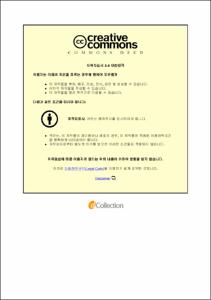국소 신장암 환자에서 근감소증이 환자의 예후에 미치는 영향
- Abstract
- 연구 목적
본 연구는 근치적 신장 절제술을 시행한 비전이성 신장암 환자에서 수술 전 근감소증, 즉 근육량의 감소가 환자의 수술 후 예후에 미치는 영향을 기술하고자 하였다. 본 연구는 수술 전 근감소증이 있는 환자에서 수술 후 예후가 좋지 않을 것을 가정하였다.
연구 방법
2004년에서 2014년까지 서울아산병원 비뇨의학과에서 근치적 신장 절제술을 시행한 환자 중 비전이성 신장암 (T병기 pT1b-pT2b)로 수술 후 조직검사를 통하여 확진된 환자 485명을 후향적으로 분석하였다. 수술 전 컴퓨터단층사진을 통하여 수술 전 골격근지수를 측정하였고 남성에서 52.4 cm2/m2, 여성에서 38.5 cm2/m2의 절단값을 사용하여 근감소증을 정의하였다. 각 환자군의 생존률, 질병특이생존률, 무병생존률은 Kaplan-Meier 방법과 로그순위검정을 통하여 비교하였고 근감소증과 생존률, 질병특이생존률, 무병생존률의 관계는 Cox 비례위험모형을 통하여 분석하였다.
결과
485명의 환자 중 211명 (43.5%)의 환자가 근감소증으로 분류되었다. 근감소증 환자군은 고령 (57 vs 52; p=0.002), 남성 (75.4% vs 59.5%; p<0.001)에서 빈도가 더 높았으며 낮은 BMI (23.0 vs 25.8; p<0.001)와 낮은 비만율 (BMI ≥ 25 kg/m2; 25.1% vs 61.3%; p<0.001)을 보였다. 그러나 두 군 사이 종양의 크기, 병기, Fuhrman 핵분화도는 통계적으로 유의미한 차이를 보이지 않았다. 추적관찰 기간의 중간값은 83개월이었으며 5년 생존률은 비근감소증 군에서 96.2%, 근감소증군에서 88.7% 였다. 비근감소증 환자군에서 우월한 생존률(p<0.001)과 질병특이생존률(p=0.002)을 보였으나 무병생존률에는 통계적으로 유의한 차이가 없었다. Cox 비례위험모형을 이용한 다변량 분석에서는 근감소증의 존재가 모든 요인에 의한 사망(HR 2.17; p=0.003) 및 신장암으로 인한 사망(HR 2.52; p=0.014)의 독립적인 위험인자였다.
결론
근감소증은 비전이성 신장암 환자에서 근치적 신절제술 시행 후 모든 요인에 의한 사망 및 신장암으로 인한 사망의 독립적인 위험인자이다. 이러한 결과는 비전이성 신장암 환자의 수술 전 근감소증의 확인이 위험도 분류 및 치료계획에 중요함을 의미한다.
|Purpose
The aim of this study was to describe the effect of preoperative sarcopenia on oncologic outcomes of organ confined renal cell carcinoma after radical nephrectomy.
Materials and Methods
485 patients who underwent radical nephrectomy with pathologically confirmed organ confined renal cell carcinoma (pT1b-pT2b) between 2004 and 2014 were retrospectively analyzed. Preoperative computerized tomography scans were acquired, and preoperative skeletal muscle index was measured. Gender specific cutoff value of skeletal muscle index at 3rd lumbar spine of 52.4 cm2/ m2 for men and 38.5 cm2/ m2 for women defined sarcopenia. Progression-free, cancer specific and overall survival was compared with the Kaplan-Meier method and log rank tests. Associations with progression, cancer specific mortality and all cause mortality were analyzed with Cox proportional hazard regression models.
Results
Of 485 patients, 211 (43.5%) patients were classified as sarcopenic. The sarcopenic group was more advanced in age (57 vs 52; p=0.002) and more predominantly male (75.4% vs 59.5%; p<0.001). Sarcopenic patients had significantly lower BMI (23.0 vs 25.8; p<0.001) and less frequency of obesity (BMI ≥ 25 kg/m2; 25.1% vs 61.3%; p<0.001). However, both groups showed no statistically significant difference in tumor size, stage and Fuhrman nuclear grade. Median follow up interval was 83 months. Our analysis showed better OS and CSS for non-sarcopenic group (5-year OS 96.2% vs 88.7%; p<0.001 and 5-year CSS 98.4% vs 92.0%; p=0.002) but no significant difference was shown for PFS. Our multivariate analysis showed that presence of sarcopenia is an independent risk factor for all cause mortality (HR, 2.17; p=0.003) and cancer specific mortality (HR, 2.52; p=0.014).
Conclusion
Sarcopenia is an independent risk of all cause mortality and cancer specific mortality after radical nephrectomy for organ confined renal cell carcinoma. Our findings imply the importance of assessing presence of sarcopenia for risk stratification and treatment planning.
- Issued Date
- 2020
- Awarded Date
- 2020-02
- Type
- Dissertation
- Keyword
- renal cell carcinoma; sarcopenia; nephrectomy; organ confined
- Alternative Author(s)
- Lee, Jongpil
- Affiliation
- 울산대학교
- Department
- 일반대학원 의학과
- Advisor
- 송채린
- Degree
- Master
- Publisher
- 울산대학교 일반대학원 의학과
- Language
- eng
- Rights
- 울산대학교 논문은 저작권에 의해 보호받습니다.
- Appears in Collections:
- Medicine > 1. Theses (Master)
- 파일 목록
-
-
Download
 200000287358.pdf
기타 데이터 / 684.92 kB / Adobe PDF
200000287358.pdf
기타 데이터 / 684.92 kB / Adobe PDF
-
Items in Repository are protected by copyright, with all rights reserved, unless otherwise indicated.